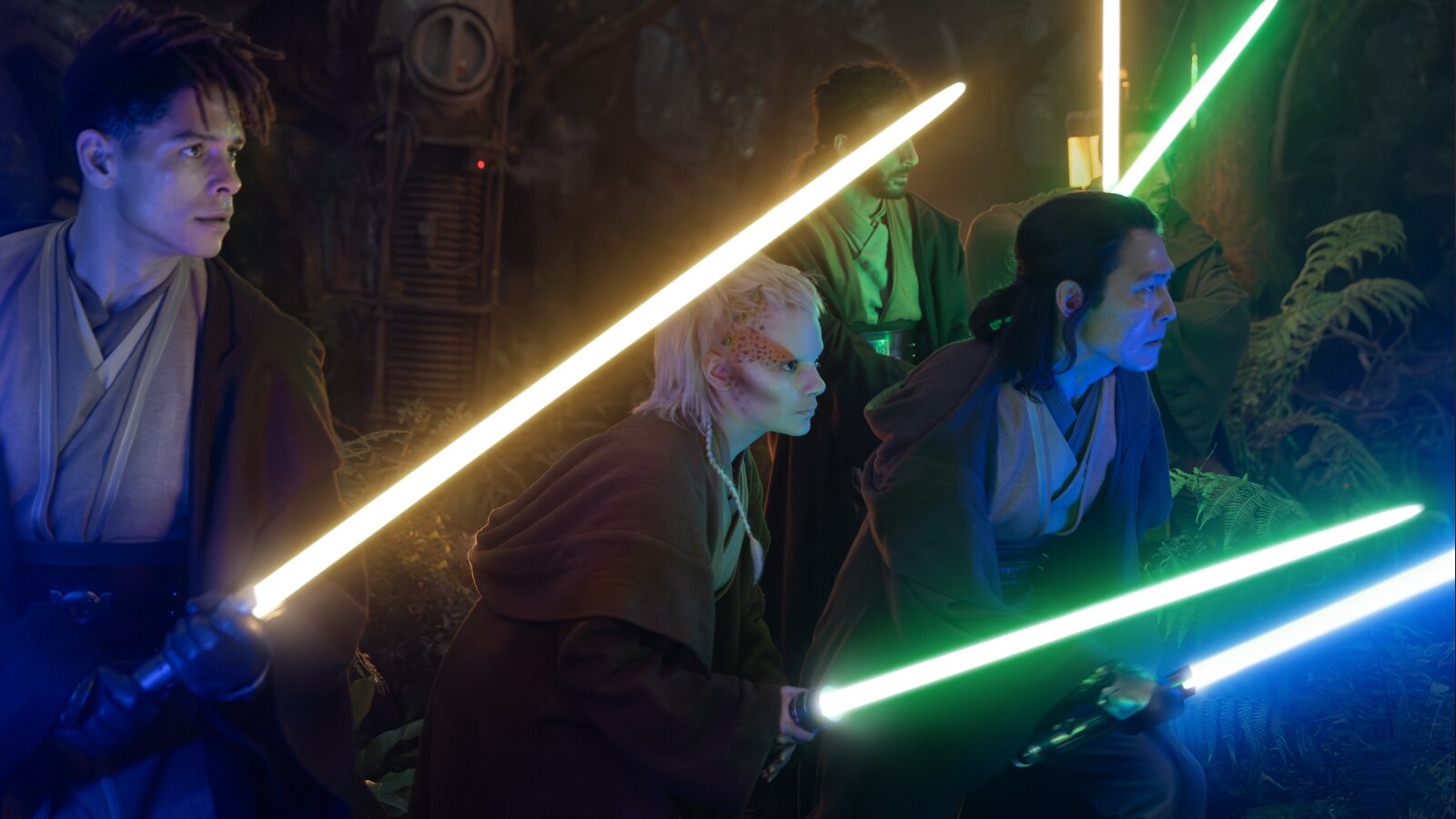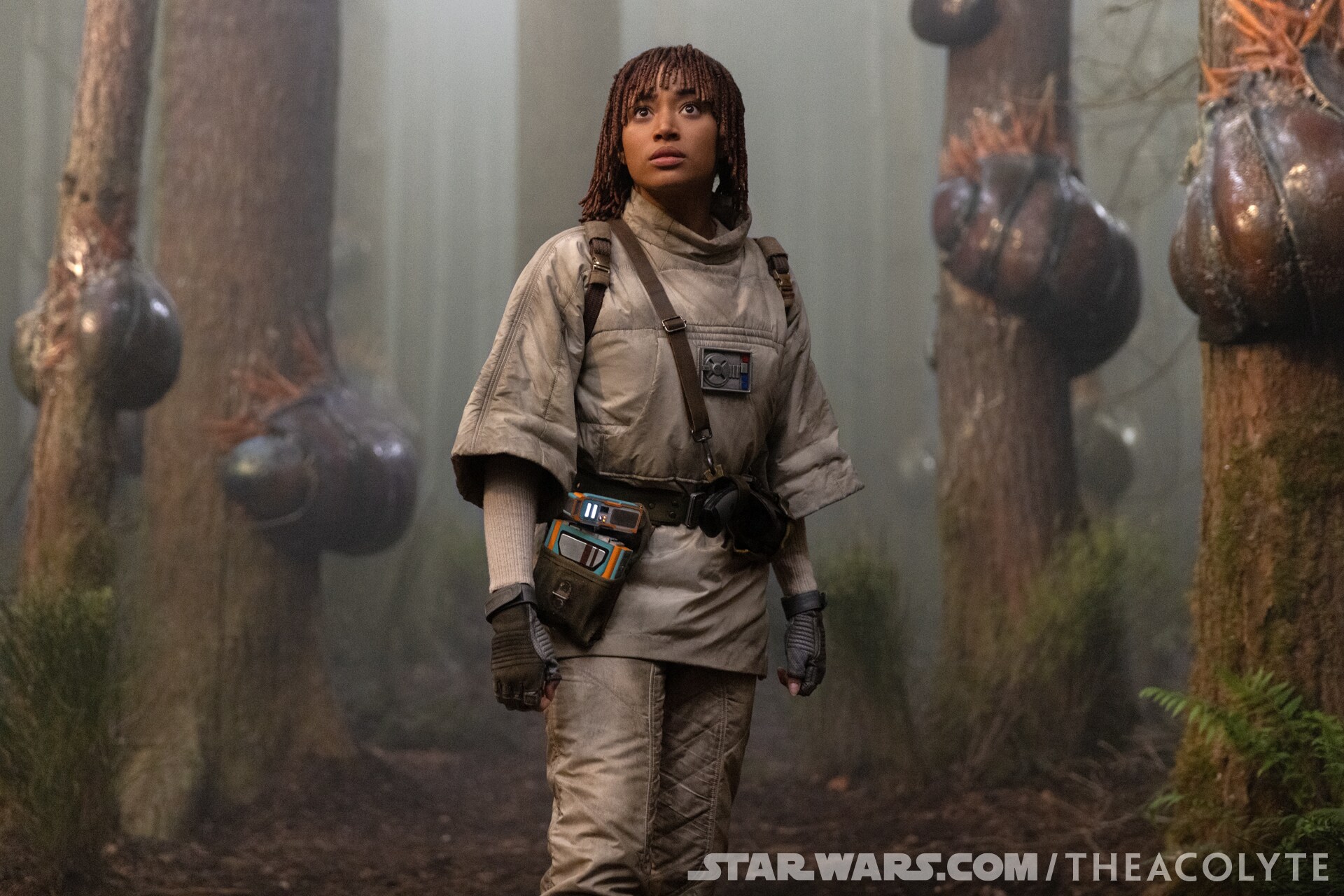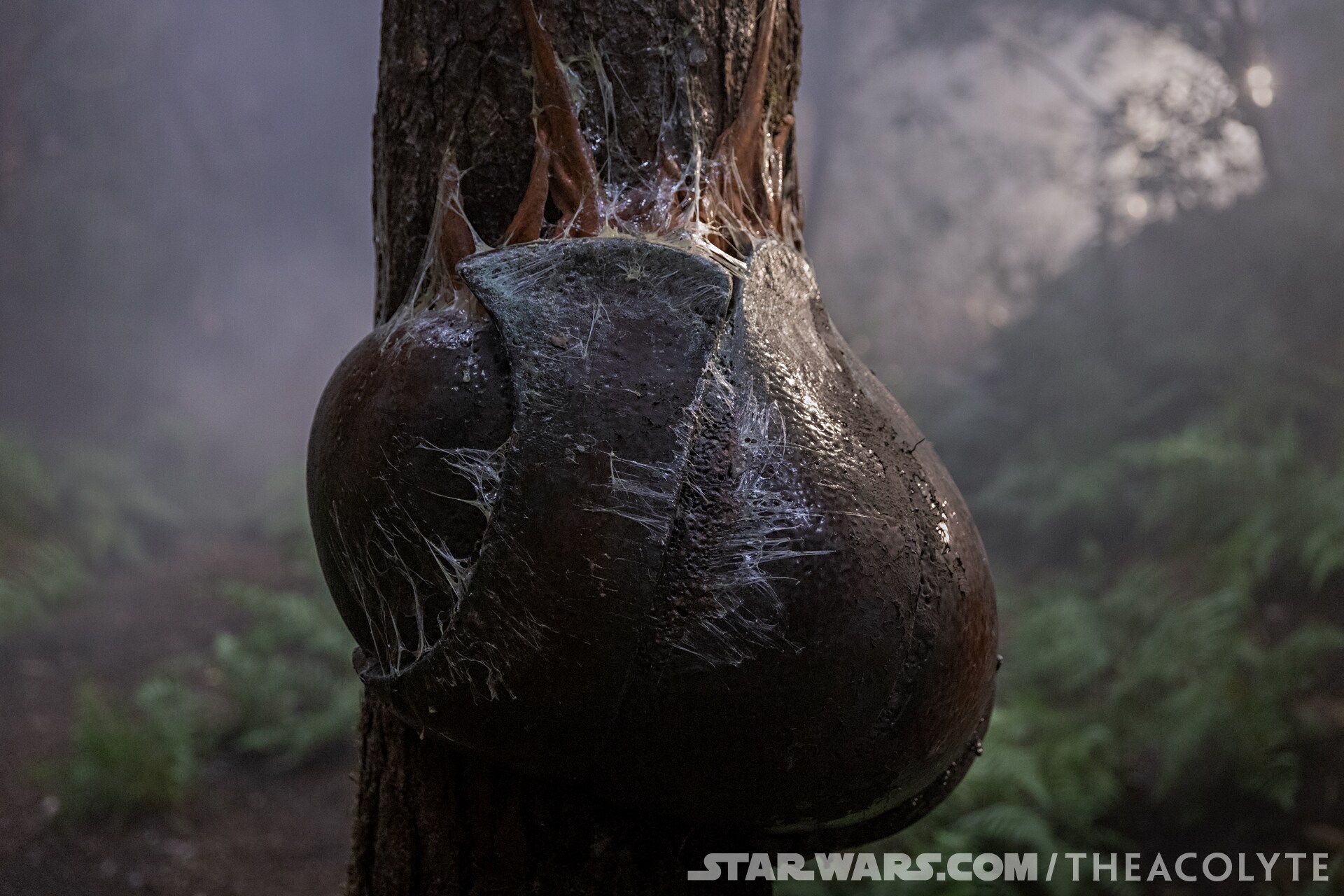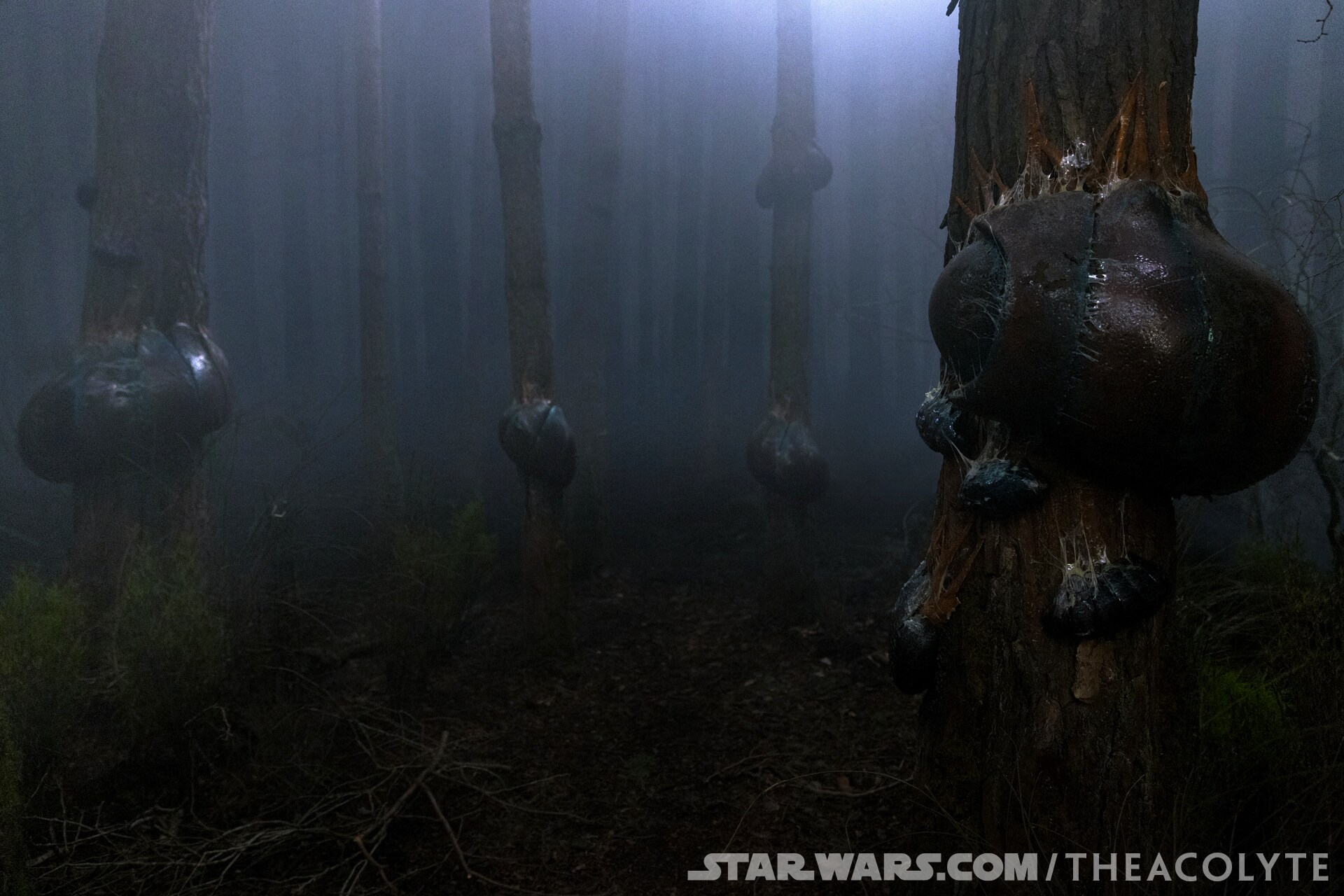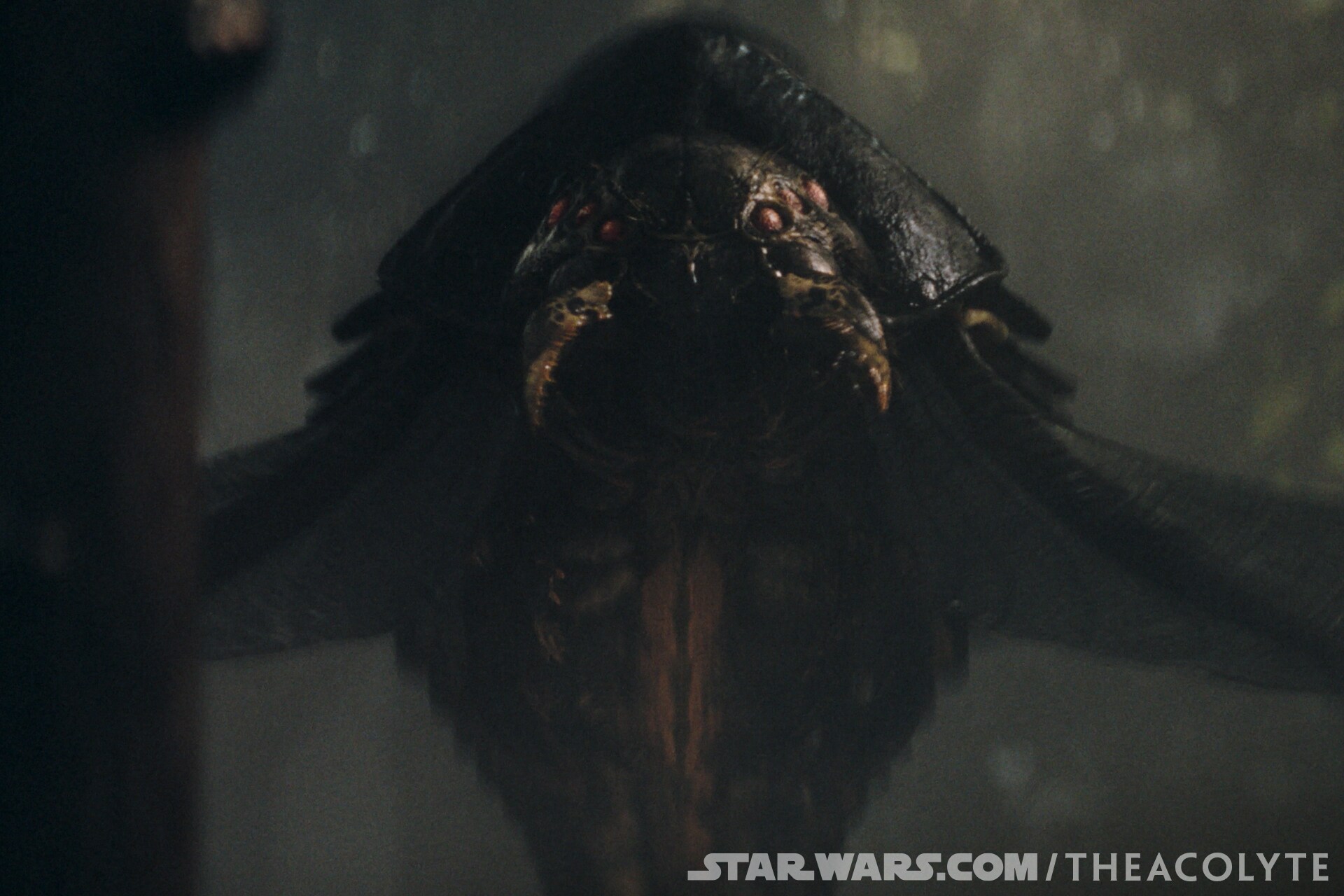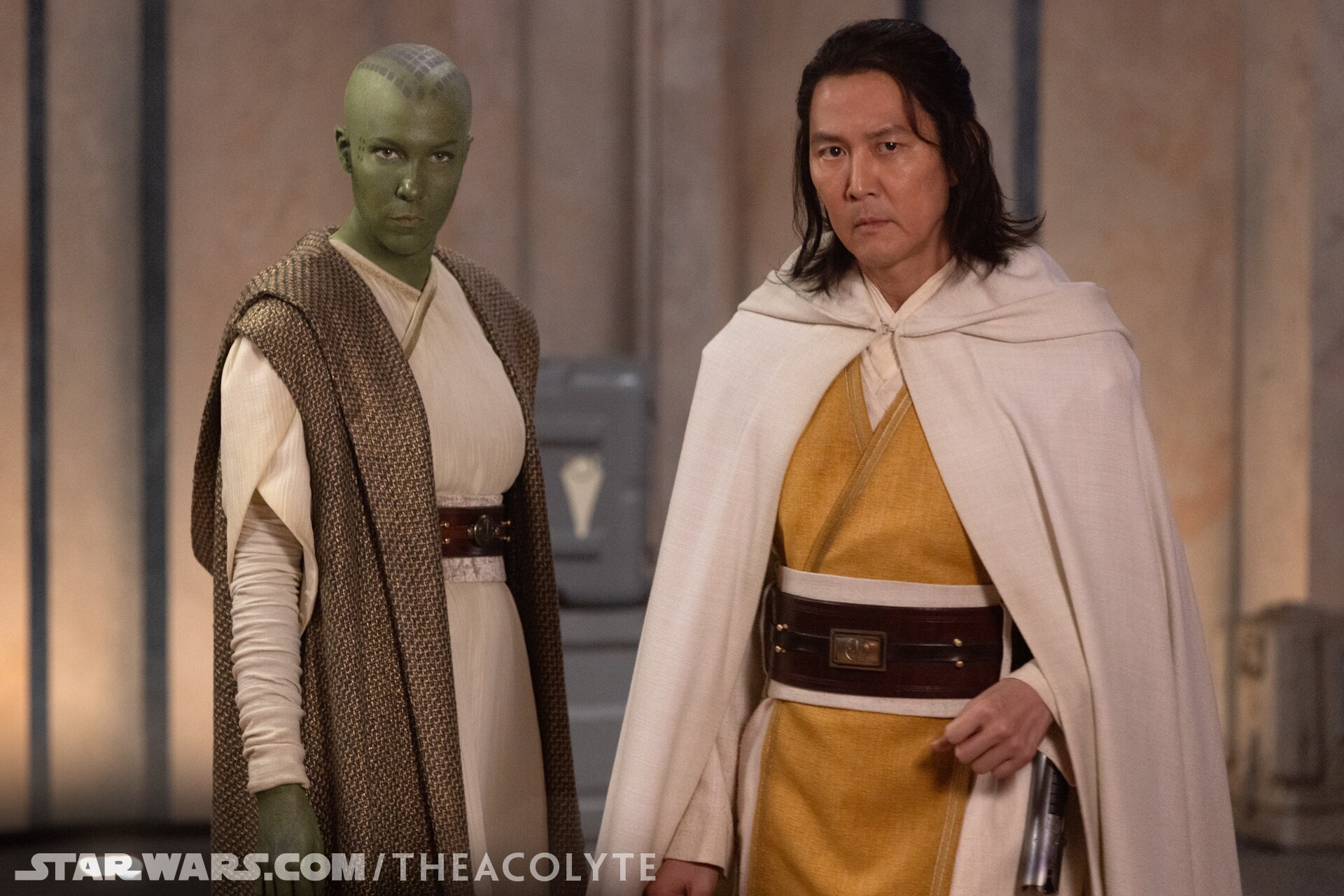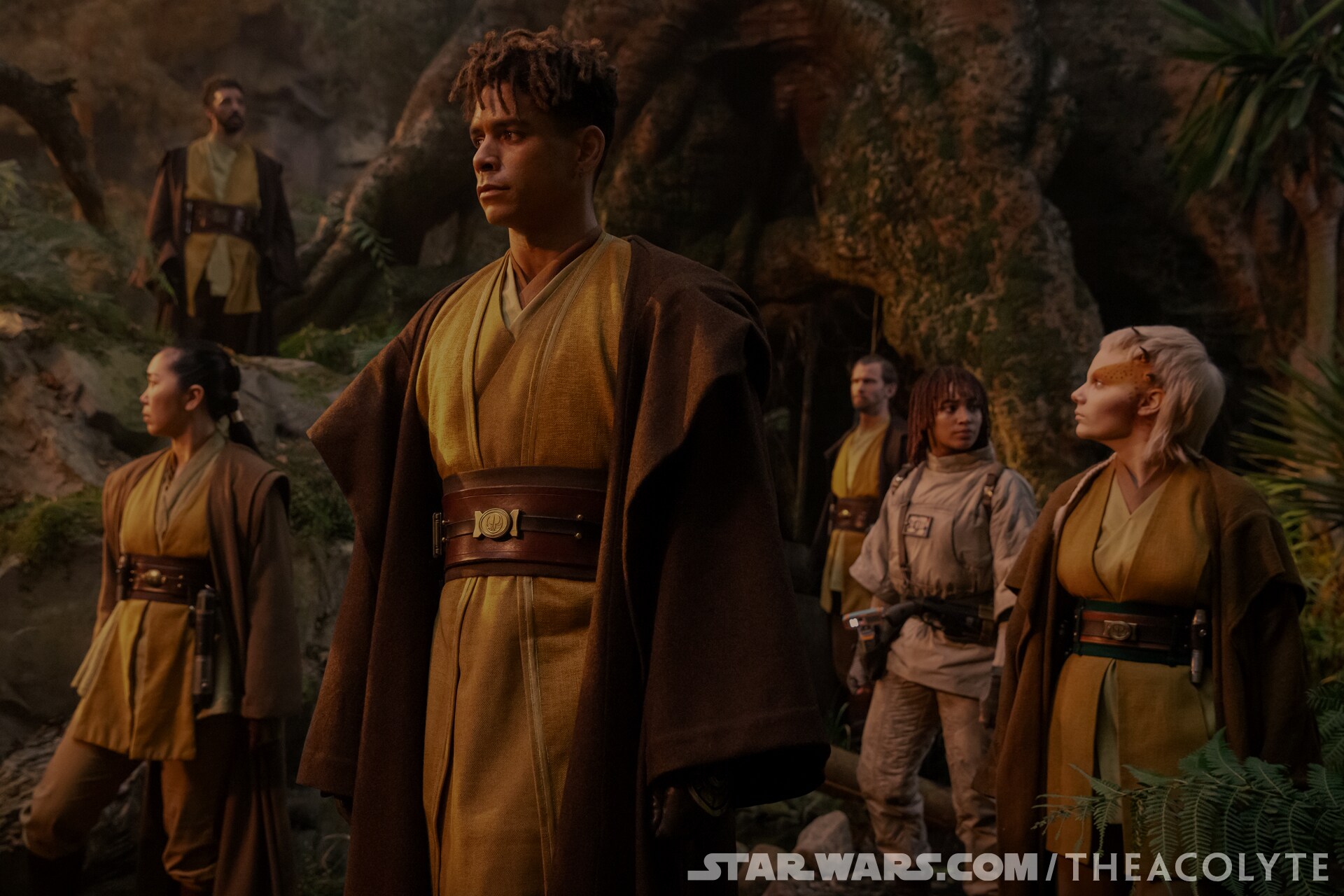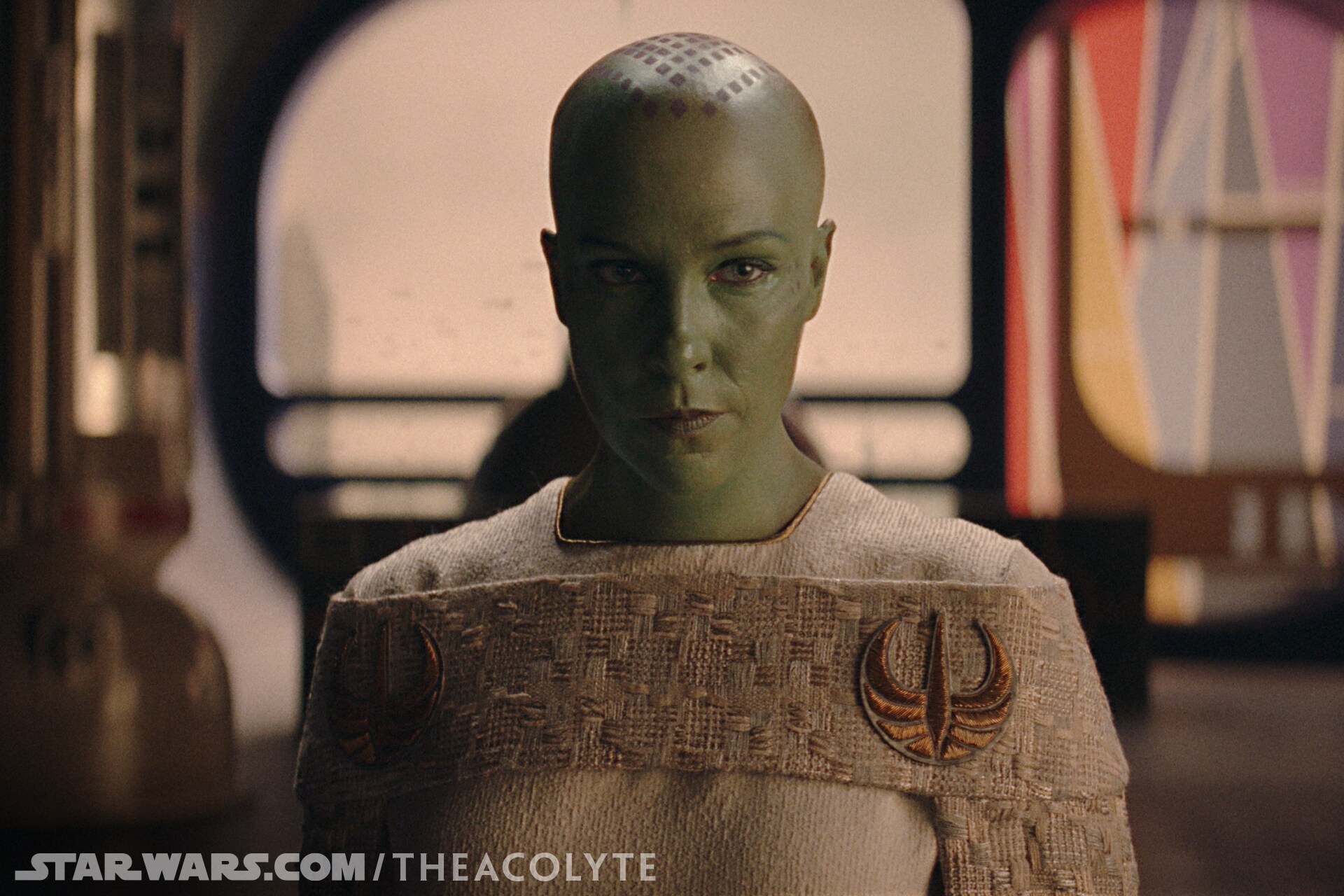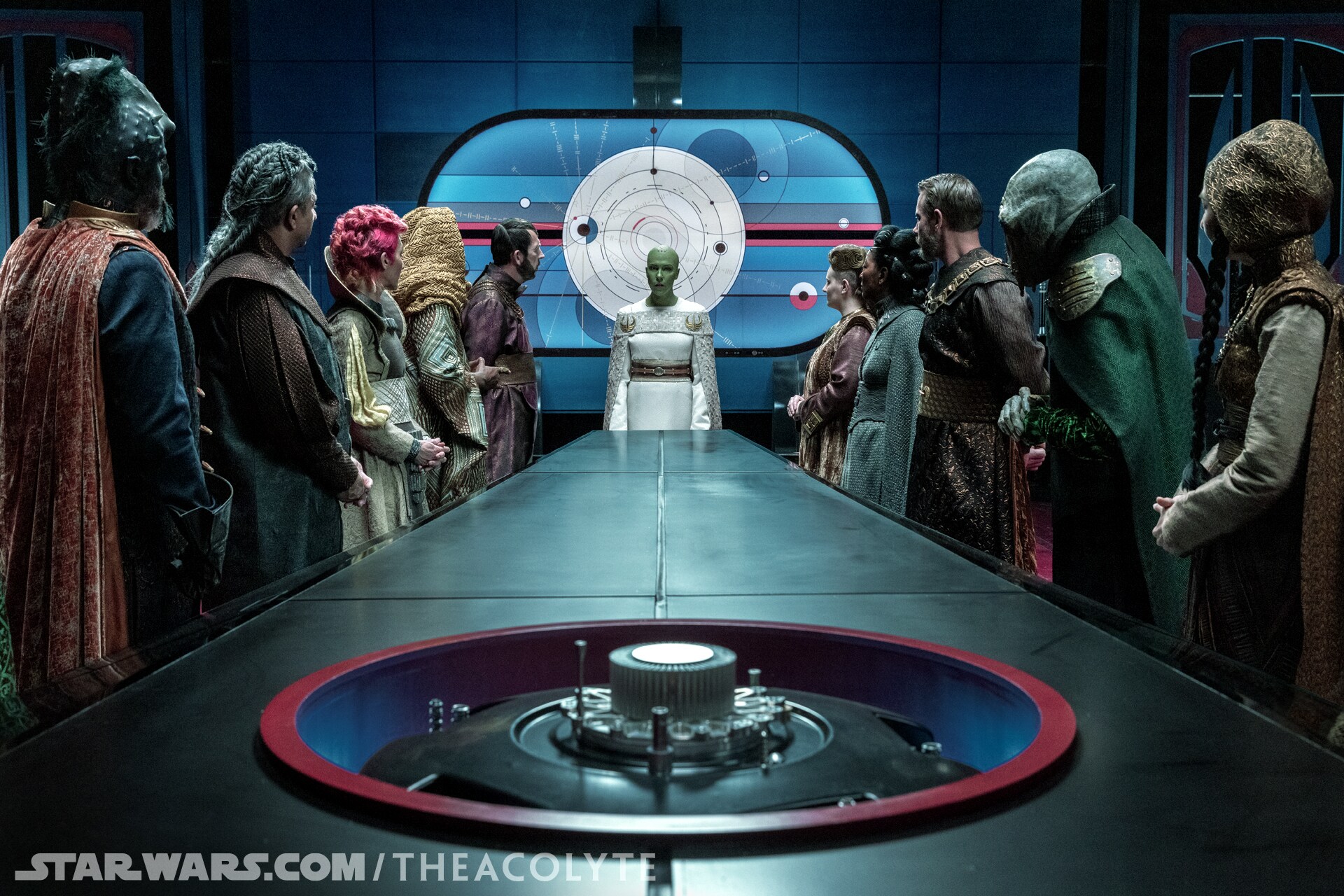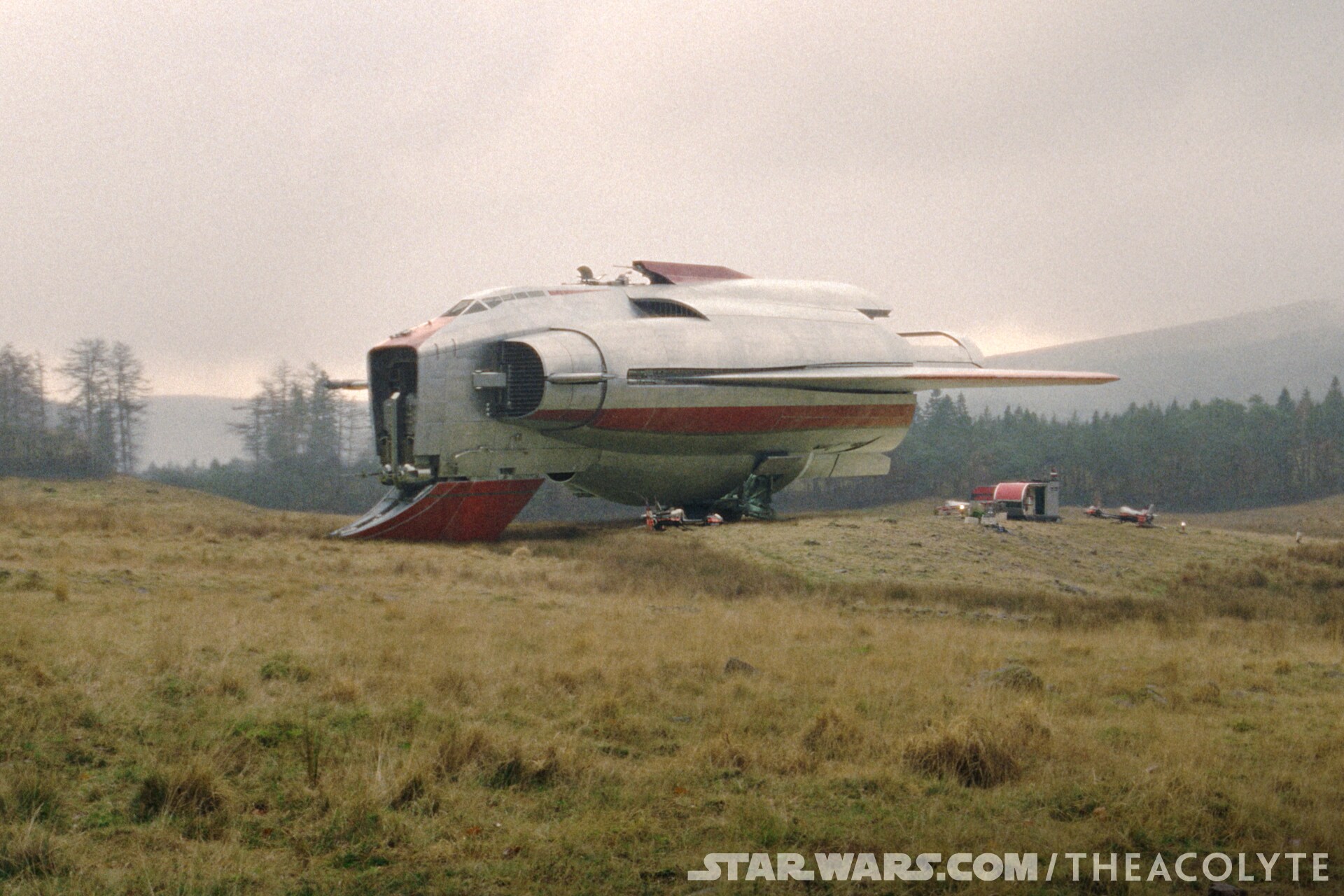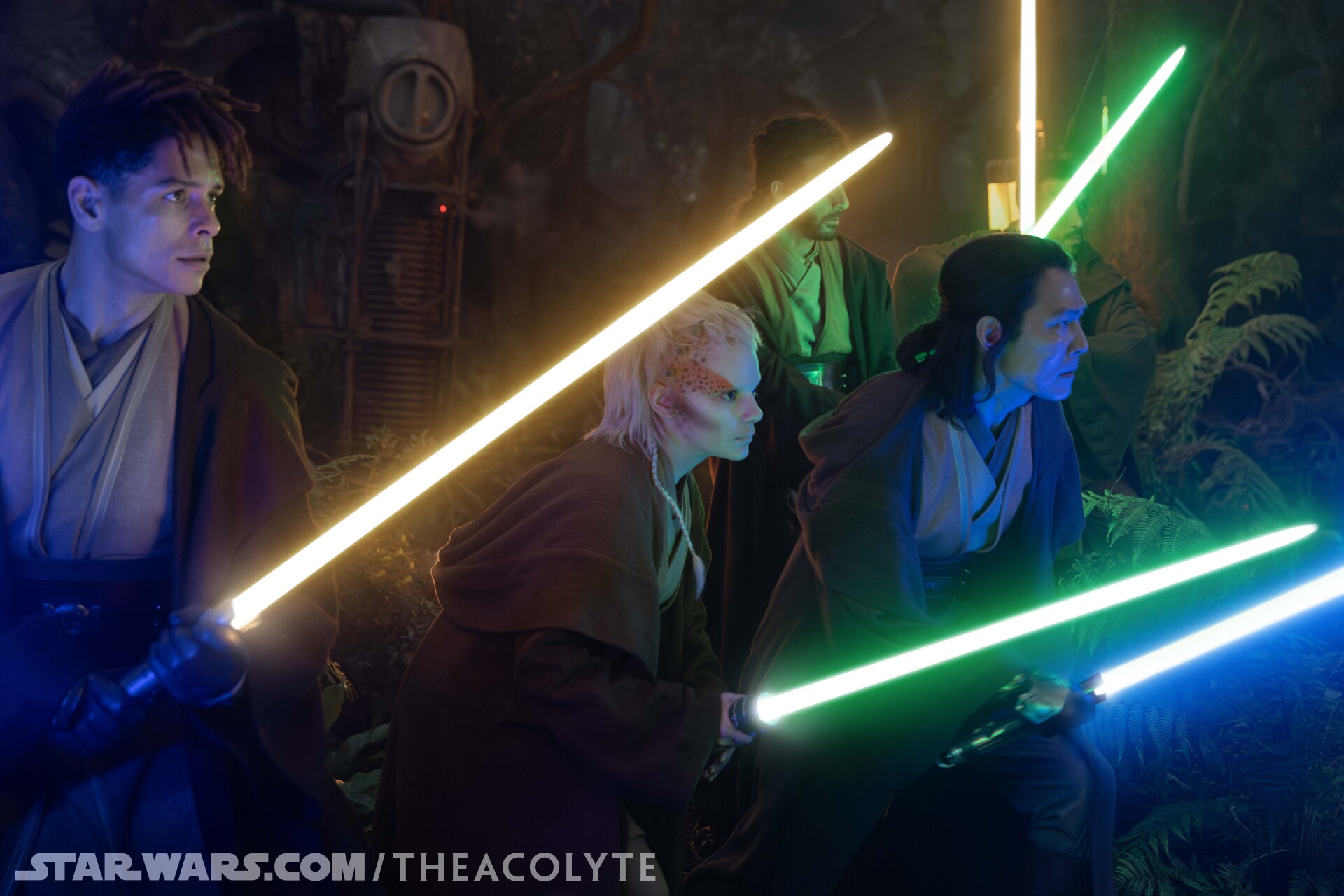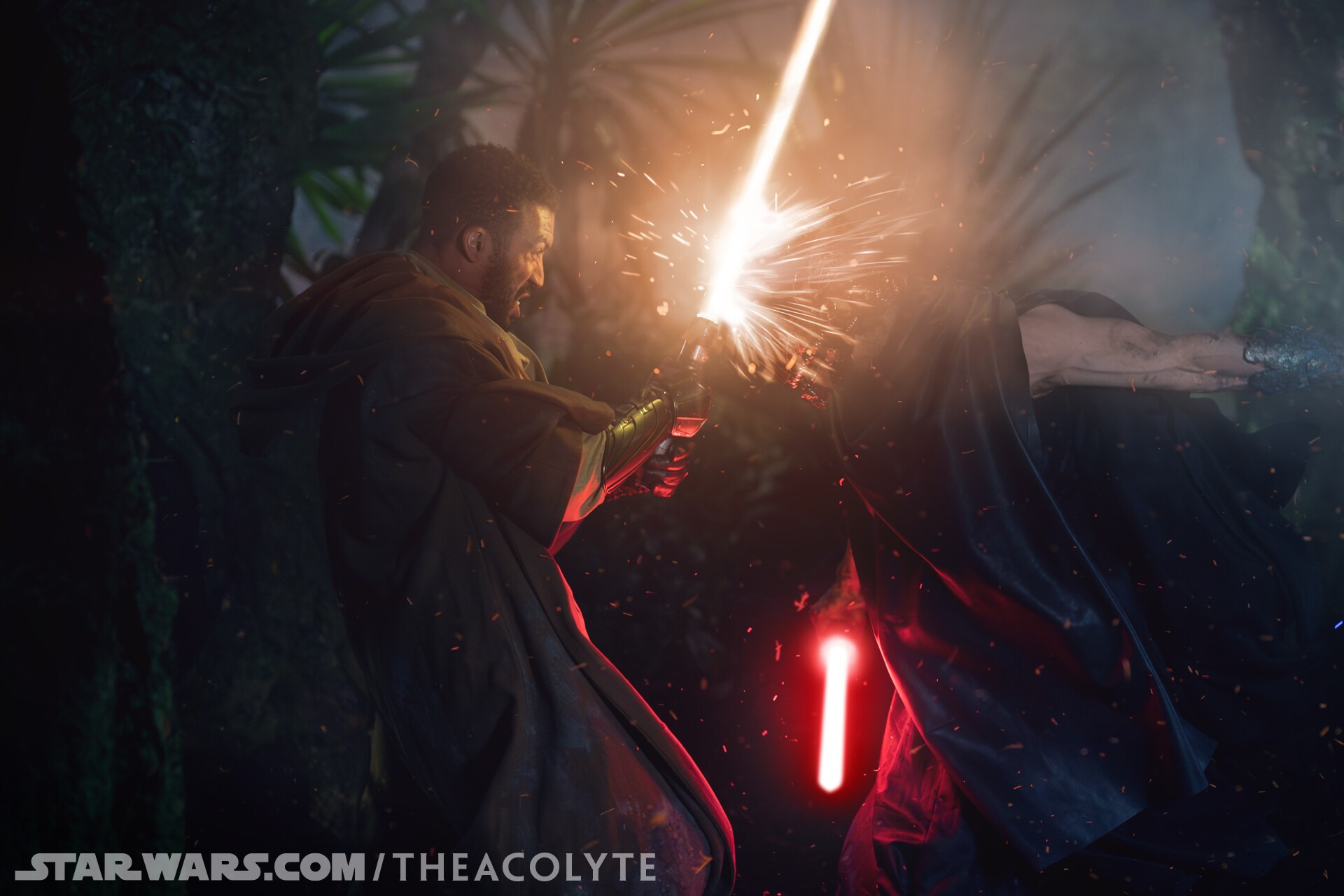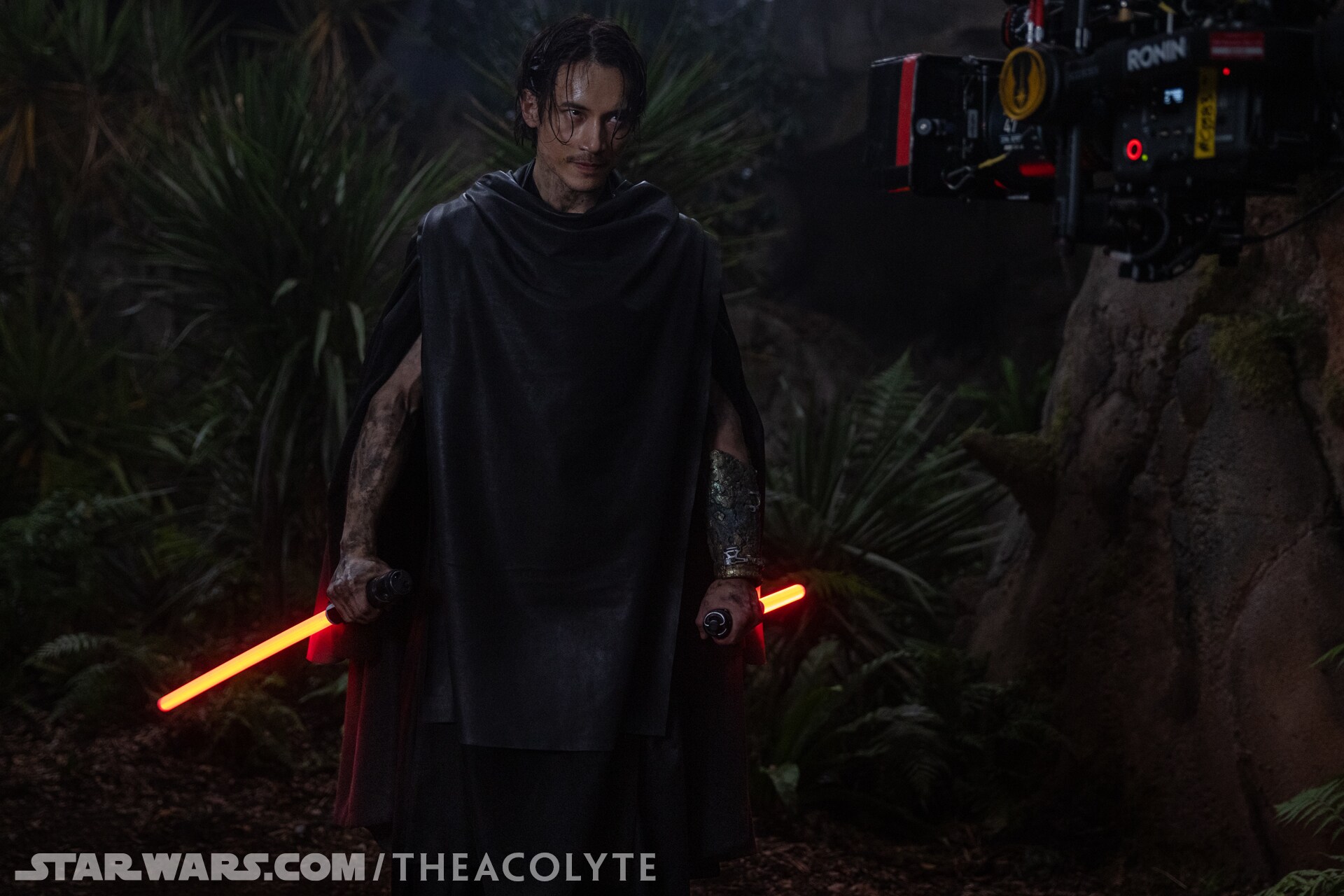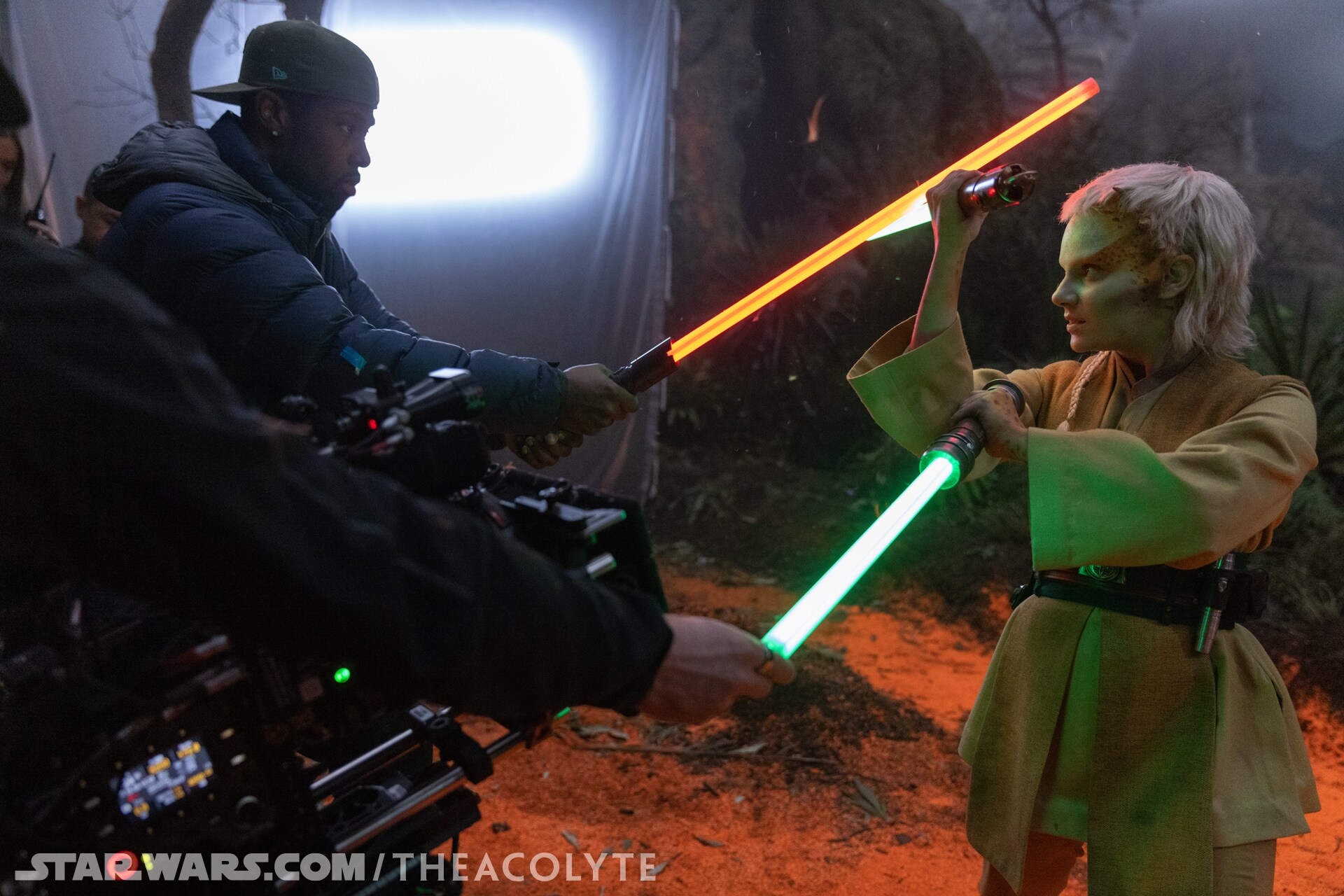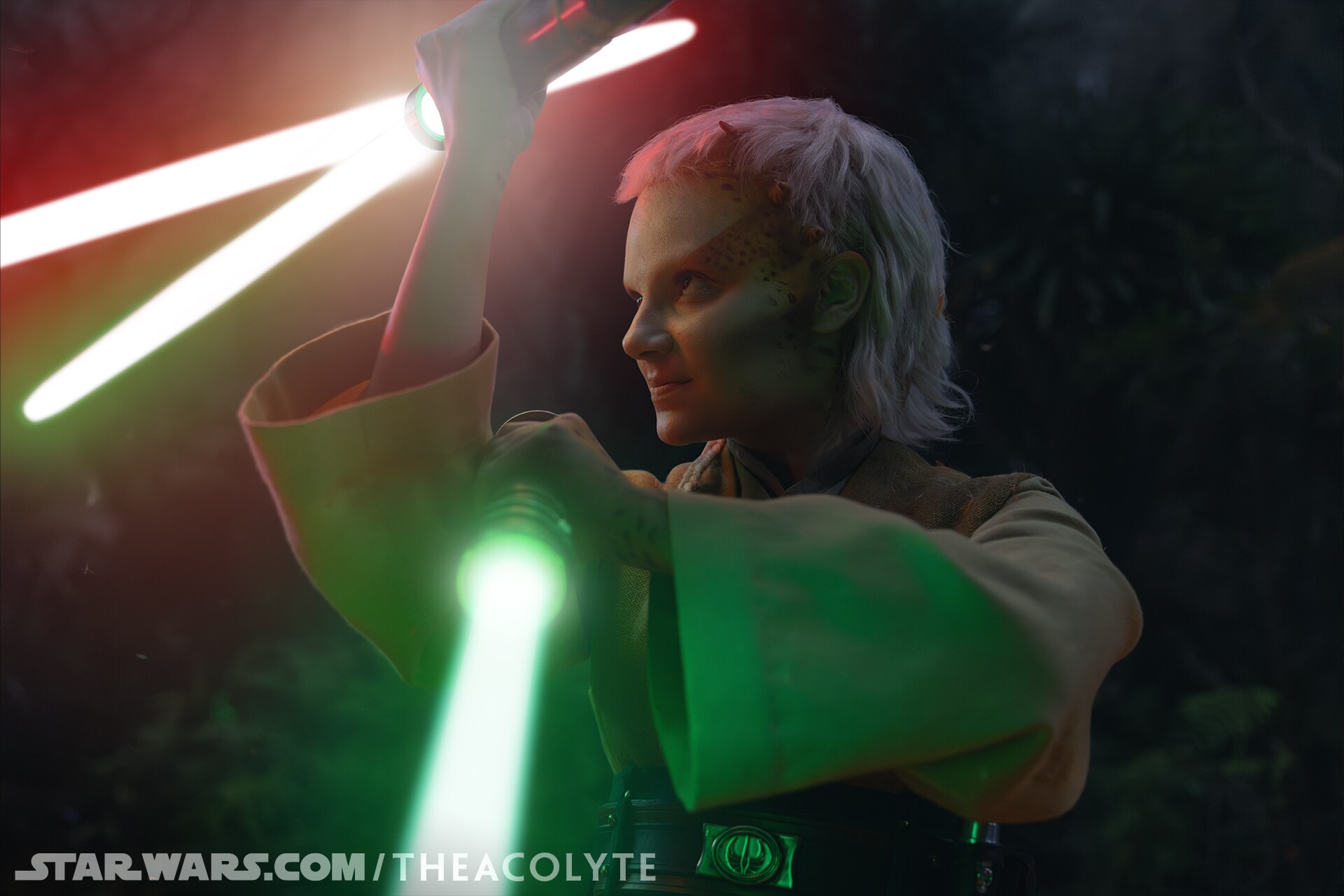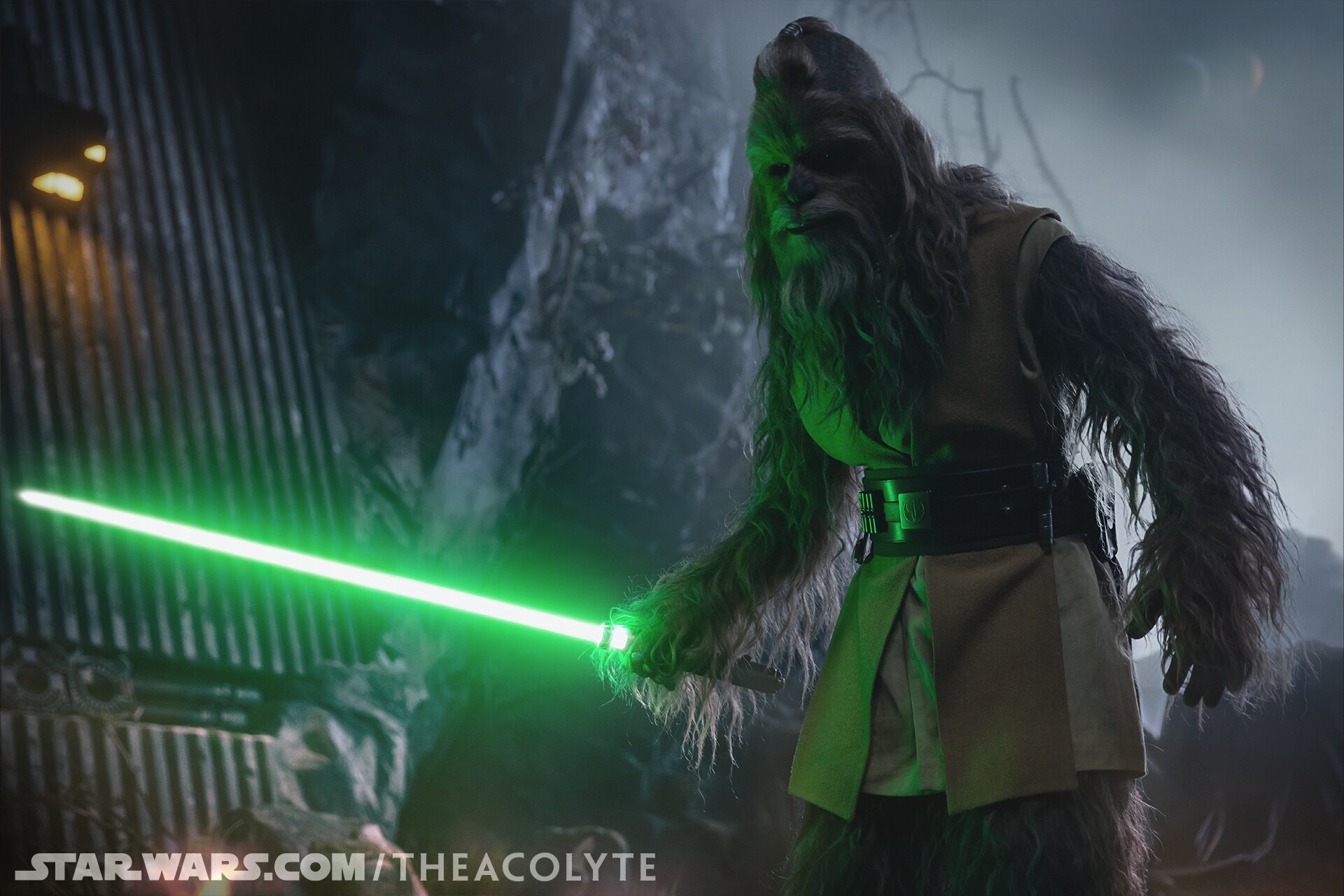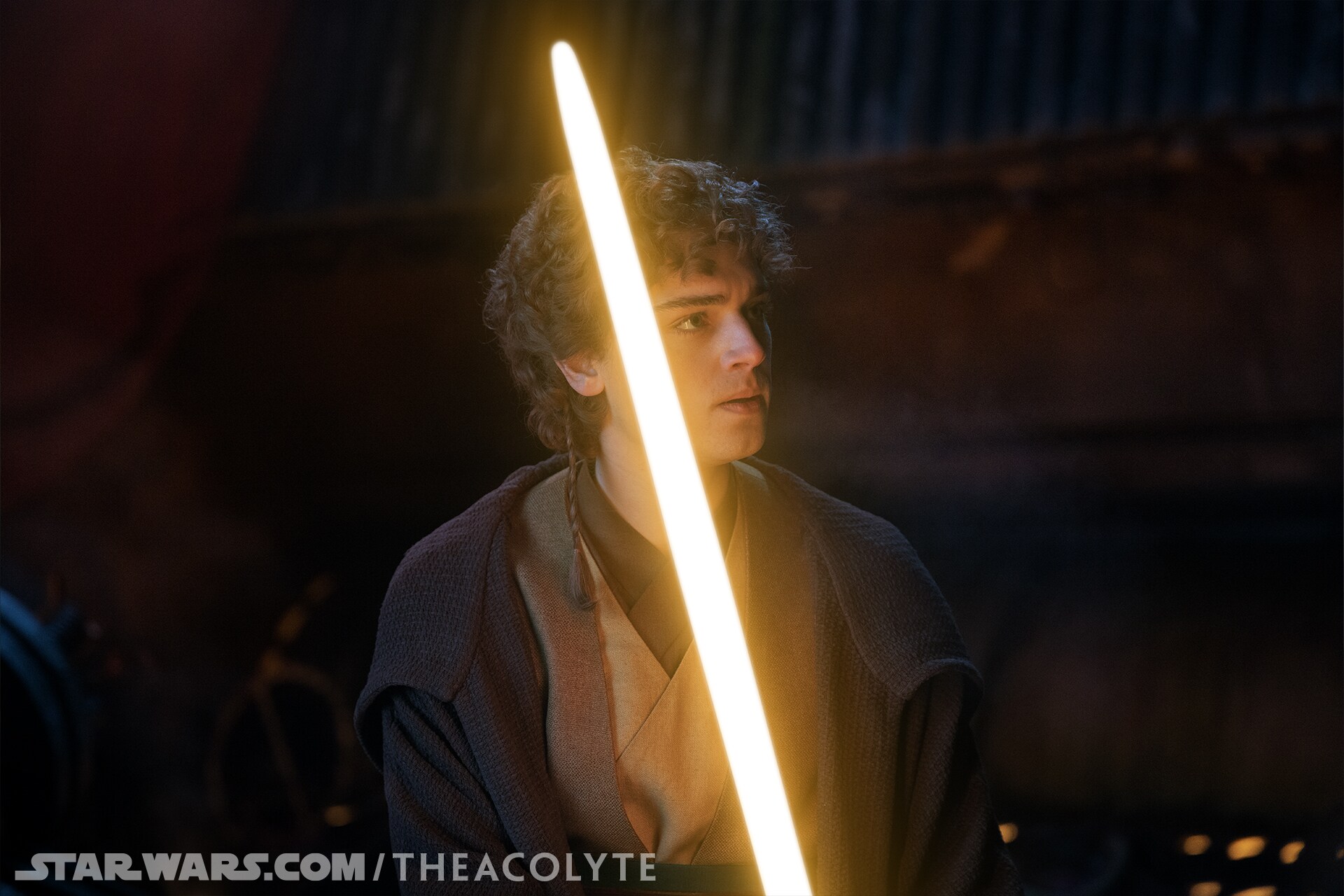
A good monster fight remains a staple in fantasy and science-fiction storytelling. In Lucasfilm’s The Acolyte, the various encounters with the umbramoths on the planet Khofar make for not only entertaining action but important storytelling as well. “They attempt to attack Osha, are sliced up by Sol, and ultimately they take the Stranger away. They were a great challenge,” Industrial Light & Magic's production visual effects supervisor Julian Foddy explains.
Initially, according to Foddy, the umbramoths were imagined to be insectoid creatures who emerged from “cocoon-like sacks” hanging from the trees. The design then evolved to be similar to large pill bugs who wrap themselves around the trees and sleep during the day before taking flight in the evening. Their depiction involved a collaboration between Foddy and the visual effects artists with creature designer Neal Scanlan and his team of fabricators and puppeteers.
“For all of the shots where you’ve got static creatures that are asleep, wrapped around the tree trunks, they’re about 95% practical onset,” says Foddy, “That’s apart from the one that moves, which was a very clever system with a hollow tree trunk with a performer inside who had their arms wrapped round inside the bug, and as they moved their arm, the bug came to life. In subsequent shots when the wings are spread, it’s all CG.”




